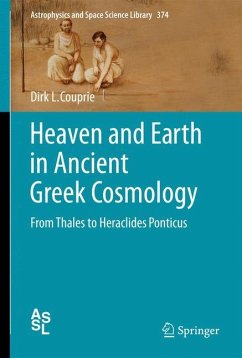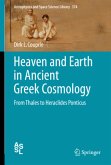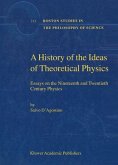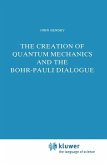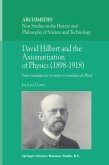In Miletus, about 550 B.C., together with our world-picture cosmology was born. This book tells the story. In Part One the reader is introduced in the archaic world-picture of a flat earth with the cupola of the celestial vault onto which the celestial bodies are attached. One of the subjects treated in that context is the riddle of the tilted celestial axis. This part also contains an extensive chapter on archaic astronomical instruments. Part Two shows how Anaximander (610-547 B.C.) blew up this archaic world-picture and replaced it by a new one that is essentially still ours. He taught that the celestial bodies orbit at different distances and that the earth floats unsupported in space. This makes him the founding father of cosmology. Part Three discusses topics that completed the new picture described by Anaximander. Special attention is paid to the confrontation between Anaxagoras and Aristotle on the question whether the earth is flat or spherical, and on the battle between Aristotle and Heraclides Ponticus on the question whether the universe is finite or infinite.
All theoretical science has its beginning in early Greek cosmology, that crucial period from mid-6th century through mid-4th century BC and the magnificent thinker of the time Anaximander. This book, the result of twenty years of study, vividly illustrates the transition from the archaic cosmological world-picture of a flat earth with a celestial vault to the Western world-picture of a free floating earth in an infinite universe. This intellectual evolution is explored by following the decisive steps taken by Anaximander of Miletus.
All theoretical science has its beginning in early Greek cosmology, that crucial period from mid-6th century through mid-4th century BC and the magnificent thinker of the time Anaximander. This book, the result of twenty years of study, vividly illustrates the transition from the archaic cosmological world-picture of a flat earth with a celestial vault to the Western world-picture of a free floating earth in an infinite universe. This intellectual evolution is explored by following the decisive steps taken by Anaximander of Miletus.
From the reviews:
"Independent researcher/philosopher Couprie has extended his doctoral dissertation work on Anaximander (610-547 BCE) to situate him within the context of Greek history and philosophy of astronomy. ... Excellent illustrations assist the reader in visualizing the ancient viewpoints. The plethora of detail and the subject matter make this a book most likely to be appreciated by experts rather than general readers. Summing Up: Recommended. Researchers and professionals." (M.-K. Hemenway, Choice, Vol. 49 (2), October, 2011)
"Independent researcher/philosopher Couprie has extended his doctoral dissertation work on Anaximander (610-547 BCE) to situate him within the context of Greek history and philosophy of astronomy. ... Excellent illustrations assist the reader in visualizing the ancient viewpoints. The plethora of detail and the subject matter make this a book most likely to be appreciated by experts rather than general readers. Summing Up: Recommended. Researchers and professionals." (M.-K. Hemenway, Choice, Vol. 49 (2), October, 2011)

